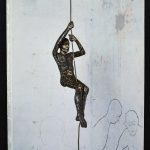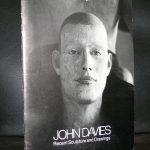
Born in 1957, Lise Malinovsky received her education first at the School of Applied Arts and then at the Academy of Fine Arts. As early as 1982, while still a student at the Academy, she made her mark with her virtuosic pastiches at Charlottenborg’s Spring Exhibition. Here, she showcased her grounding in both fauvism and art history dating back to the Baroque period. While her works were not as wild as those of her contemporaries, there is – and still is to this day – a vibrant vitality and expressiveness in her spontaneous expression, especially through her bold colors and gestural brushstrokes. Lise Malinovsky’s artistic language is sensual and tactile, and while she has a clear message for the viewer, the subject is subordinate to her urge to express herself through painting. She has created a wide range of decorations and has also painted portraits, including that of former Prime Minister Poul Nyrup Rasmussen. Lise Malinovsky resides and works in both Denmark and Spain, constantly infusing her art with enigmatic complexity and linguistic dynamism that captivates viewers.
www.ftn-books.com has now the Willy Scvhoots publication on Malinovsky available.













































































